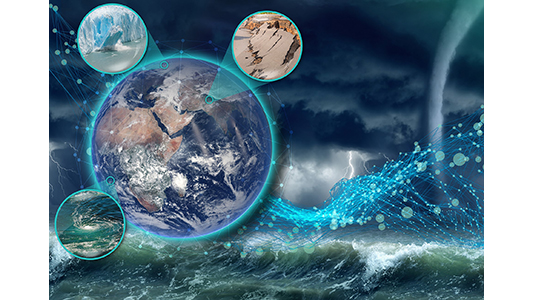Rome- Thales Alenia Space, a Joint Venture between Thales (67%) and Leonardo (33%), has signed a first 7M€ contract with the European Space Agency (ESA) to develop the Earth Observation Synthetic Aperture Radar (SAR) instrument to be embarked on the two Harmony satellites, ESA’s 10th Earth Explorer mission.
This bridging phase contract is the first step towards the final contract for the overall SAR implementation phase. Under this contract, Thales Alenia Space will lead a diversified European industrial consortium to design, develop and validate the C-Band SAR instruments and will also be responsible of the C-Band digital electronic and antenna tiles to be embarked on both Harmony satellites, expected to be launched aboard a Vega-C launch vehicle by 2029.
“ESA’s choice of entrusting the development of the radar instrument is evidence of the success and great compliance of the technology used by Thales Alenia Space and confirms our company’s long and recognized experience in manufacturing Earth observation satellites based on radar technology.” said Massimo Comparini, Senior Executive Vice President, Observation, Exploration, and Navigation at Thales Alenia Space. “The development of this instrument will allow Thales Alenia Space to make an important technological and architectural step forward improving the competitiveness of SAR products in the institutional and commercial Earth Observation market”.
Florence Hélière, ESA’s Harmony Project Manager, said, “Thanks to Thales Alenia Space’s long involvement in radar technology, I am assured they will develop the Harmony SAR instrument successfully. I’m also confident that the team’s motivation and engagement will be an asset in maintaining the schedule and meeting our rendezvous with Sentinel-1.”
Thales Alenia Space has played a key role as industry during the Harmony preparatory phase, supporting ESA in the definition of a high performing solution able to fully meet the mission scientific objectives and to develop in parallel all the relevant SAR enabling technologies.
More information about the 10th Earth Explorer Harmony mission
Earth Explorer missions form the science and research element of the ESA dual-strategy Living Planet Programme, which also includes the operational service-oriented Earth Watch missions. The Earth Explorer missions focus on the atmosphere, biosphere, hydrosphere, cryosphere and the Earth’s interior with emphasis on the interactions between these components, and on the impact that human activities have on the Earth’s processes.
Together with Sentinel-1, Harmony promises to provide a wealth of unique data on ocean–ice–atmosphere interactions at unprecedented resolution for more insight into upper-ocean heat exchanges, drivers of extreme weather and the long-term impacts of climate change.
The mission will also shed new light on deformation and flow dynamics at the rapidly changing edges of ice sheets for a better understanding of sea-level rise. In addition, Harmony will measure small shifts in the shape of the land caused by earthquakes and volcanic activity, thereby contributing to risk monitoring.
The Harmony mission consists of two bistatic passive Synthetic Aperture Radar (SAR) receive-only satellites, enhanced by a Thermal Infrared (TIR) optical payload, flying in a loose formation with Sentinel-1. Using Sentinel-1 as an illuminator of opportunity and augmenting its observations with a multi-static configuration for direct measurements of surface velocities would make a highly innovative contribution to Earth Observation capabilities.












